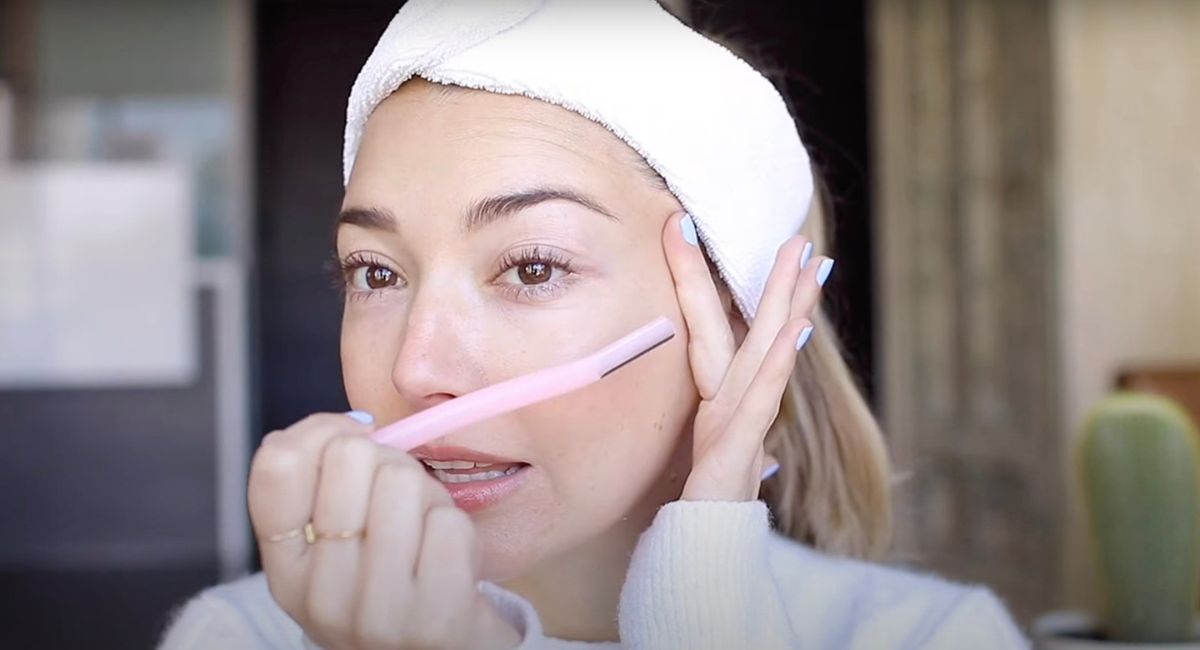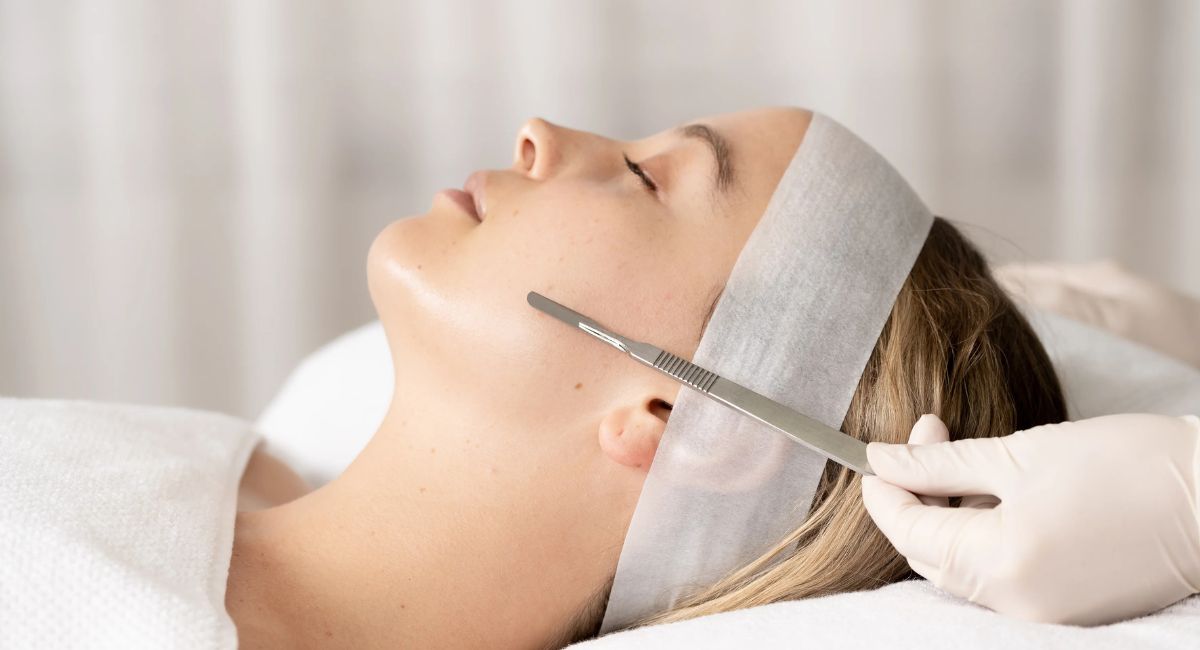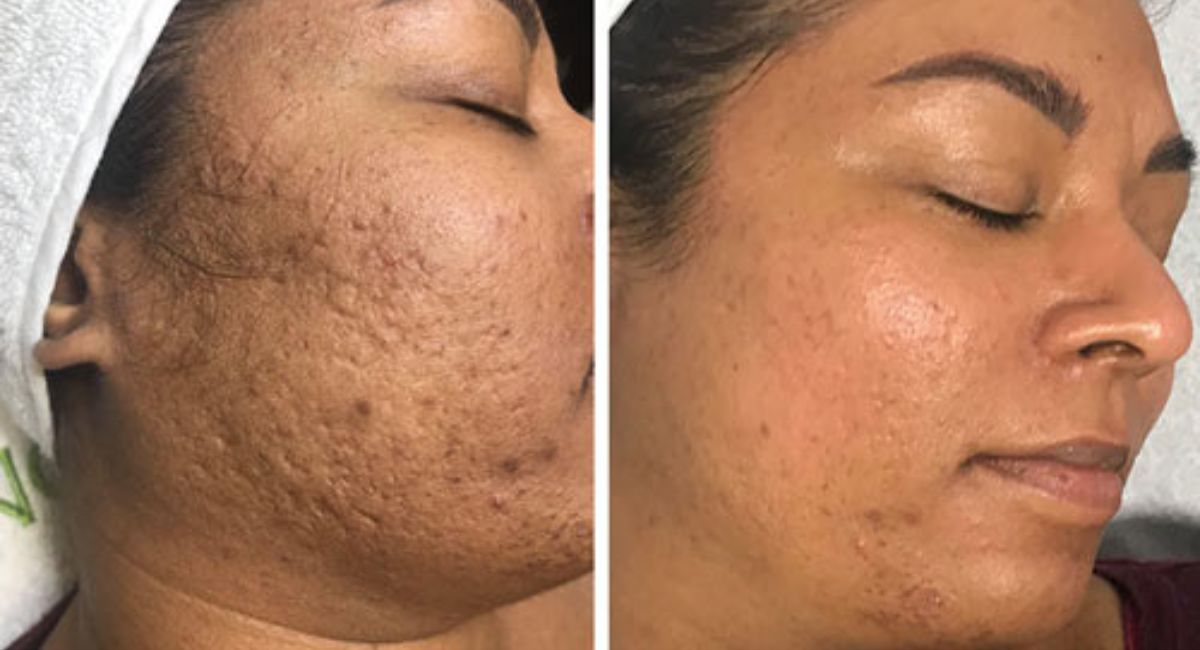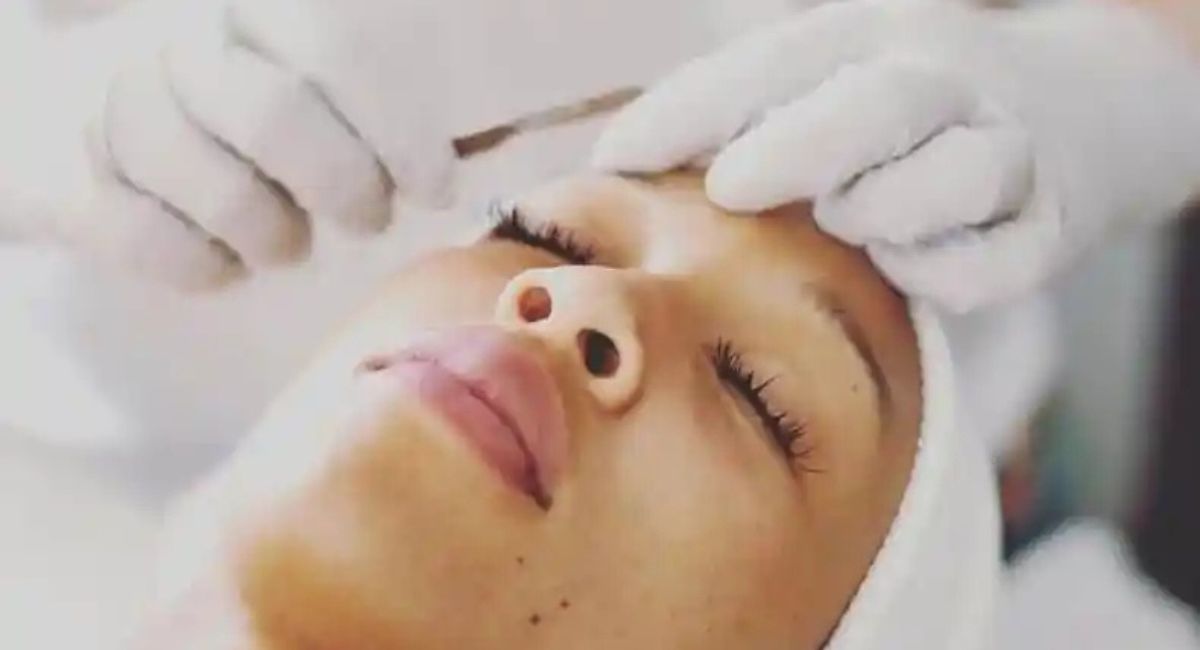Ever look in the mirror and wonder why your skin still looks dull even after all those scrubs and masks? You’ve probably heard about dermaplaning and how it makes skin smooth and glowing—but the real confusion begins when you ask, “How often should you dermaplane?” Too much can irritate your skin, but too little might not give you that glass-skin look everyone’s talking about.
This post breaks it all down for you. You’ll learn exactly how often to dermaplane your face based on your skin type, age, and goals. You’ll also discover expert tips to build a safe dermaplaning routine, avoid common mistakes, and keep your skin glowing longer. Let’s make sure your next session gives you the smoothest, healthiest skin yet.
What Is Dermaplaning and Why Do People Love It?
Dermaplaning is a gentle exfoliation treatment that uses a sterile blade to remove dead skin cells and fine hair (peach fuzz) from your face. It’s one of the easiest ways to achieve instant radiance without harsh chemicals. Many people choose dermaplaning because it smooths skin texture, enhances product absorption, and reduces dullness. Plus, it’s great for those who want quick results before an event or photo shoot.
Americans, especially skincare enthusiasts, love it for its simplicity and immediate dermaplaning benefits. It’s safe for most skin types, and when done correctly, it can make your face feel baby-soft. It also helps improve makeup application, giving you that airbrushed finish. Here’s a quick comparison of dermaplaning vs shaving and microdermabrasion:
| Treatment Type | Removes Dead Skin | Removes Peach Fuzz | Downtime | Suitable for Sensitive Skin |
|---|---|---|---|---|
| Dermaplaning | ✅ Yes | ✅ Yes | ❌ None | ✅ Yes |
| Shaving | ❌ No | ✅ Yes | ❌ None | ⚠️ Sometimes |
| Microdermabrasion | ✅ Yes | ❌ No | ⚠️ Mild | ⚠️ Not Always |
How Often Should You Dermaplane for Best Results?
Most skincare experts suggest dermaplaning every three to four weeks. This dermaplaning schedule aligns with your skin’s natural renewal cycle, allowing dead cells to rebuild before the next session. Overdoing it can lead to signs of over-exfoliation, redness, or sensitivity. The best time to dermaplane is when your skin looks slightly dull or when makeup doesn’t sit smoothly anymore.
If you’re unsure how often to dermaplane face, consider your skin’s needs. Those with normal or combination skin can safely dermaplane every month, while dermaplaning for sensitive skin may need more recovery time. Always remember: healthy skin needs rest between treatments.

Does Skin Type Affect Dermaplaning Frequency?
Yes, skin type plays a major role in determining your dermaplaning frequency. Oily skin can handle it more often, while dry or sensitive skin needs longer gaps between sessions. If you have dermaplaning for oily skin, your pores can get clogged faster, so every three weeks might work best. For dry or thin skin, once every five weeks helps prevent irritation.
| Skin Type | Ideal Frequency | Notes |
|---|---|---|
| Oily | Every 3 weeks | Helps prevent buildup and acne |
| Dry | Every 5 weeks | Avoids over-exfoliation |
| Combination | Every 4 weeks | Keeps balance |
| Sensitive | Every 6 weeks | Go slow and monitor redness |
Dermatologists emphasize following dermatologist recommendations for dermaplaning and adjusting frequency as your skin changes with age, hormones, or environment.
Signs You’re Dermaplaning Too Often (Or Not Enough)
Wondering what happens if you dermaplane too often? You may experience redness, stinging, or dryness—clear signs of over-exfoliation. These symptoms suggest your skin barrier is struggling to recover. On the other hand, if your skin feels rough and your products stop absorbing, you’re probably not exfoliating enough.
Maintaining skin barrier protection is crucial. Your skin needs recovery time to rebuild oils and moisture. If irritation occurs, pause treatments, apply soothing products, and allow your skin to heal naturally. Knowing this balance helps you achieve long-lasting dermaplaning results.
How to Build a Safe Dermaplaning Routine at Home
If you prefer at-home dermaplaning, you can achieve great results with the right tools and care. Always start with clean, dry skin and a sterile blade. Never reuse dull blades, as they can cause micro-cuts or infection. Learning how to prepare skin for dermaplaning is key—avoid using acids or retinol before your session to prevent irritation.
After you finish, follow a gentle post-dermaplaning skincare routine. Apply hydrating serums and moisturizers rich in hyaluronic acid and ceramides. Knowing how to calm skin after dermaplaning will help you recover faster and keep that smooth texture. Follow dermaplaning safety tips and avoid skincare mistakes after dermaplaning like applying harsh scrubs or retinoids right away.

Professional vs. At-Home Dermaplaning — Which Is Better for You?
Both professional dermaplaning and home treatments offer value. Professionals use medical-grade tools and have the expertise to reach deeper layers safely. They understand who should avoid dermaplaning, like those with active acne or skin infections. Clinics also combine it with facials for even better dermaplaning exfoliation.
However, can you dermaplane at home? Yes, if you’re careful. Home kits are more affordable and convenient for maintenance between spa visits. Professionals may suggest alternating both methods — one in-clinic session every two months, and at-home dermaplaning in between to keep the glow consistent. This balance ensures steady dermaplaning results without irritation.
Post-Dermaplaning Skincare: What to Do (and Avoid)
Your dermaplaning aftercare determines how well your skin heals and stays radiant. Immediately after treatment, use soothing products like aloe vera or niacinamide. Avoid makeup, saunas, and direct sunlight for 24–48 hours. Always wear sunscreen to maintain skin barrier protection.
The following table helps you understand your daily dermaplaning skincare routine after the procedure:
| Time | Recommended Care | Avoid |
|---|---|---|
| Morning | Hydrating cleanser, SPF 50+, moisturizer | Retinol, strong acids |
| Night | Gentle serum, repair cream | Scrubs, exfoliants |
Following these steps reduces does dermaplaning cause irritation and extends how long your dermaplaning results last.
Can Dermaplaning Help With Acne, Texture, and Dark Spots?
Yes, dermaplaning can improve overall skin tone and texture by removing dull layers. It can help with dermaplaning for acne scars and dermaplaning for dark spots, but should not be done on active breakouts. It unclogs pores, making it easier to absorb acne-fighting ingredients.
Many experts note that can dermaplaning help with clogged pores and pigmentation depends on your dermaplaning frequency and how to maintain results after dermaplaning. Regular exfoliation encourages cell turnover, leading to brighter, more even-toned skin over time.

How Age Impacts How Often You Should Dermaplane
As you age, cell renewal slows down. This means your dermaplaning schedule should adapt. People in their 20s can dermaplane every three weeks, while those in their 40s and 50s may only need it once a month. How age affects dermaplaning frequency depends on collagen production and lifestyle.
| Age Group | Recommended Frequency | Reason |
|---|---|---|
| 20s | Every 3 weeks | Active oil production and faster turnover |
| 30s–40s | Every 4–5 weeks | Slower renewal, need more recovery |
| 50+ | Every 6 weeks | Thinner skin, gentle approach |
Knowing how often do professionals recommend dermaplaning at different ages ensures safe, effective exfoliation without harming your skin barrier protection.
Expert Tips to Maintain Results and Protect Your Skin Barrier
Dermatologists recommend combining dermaplaning benefits with a consistent skincare plan. Hydrate daily, use SPF, and avoid harsh exfoliants between sessions. Understanding how long does dermaplaning last and how to maintain results after dermaplaning helps preserve your glow for weeks.
Experts also advise taking breaks if you notice dryness or irritation. Always prioritize skin barrier protection, and never forget sunscreen. Dermaplaning before and after photos often show dramatic improvements when routines are consistent, safe, and guided by professional advice.
FAQs About How Often Should You Dermaplane
1. How frequently should you dermaplane at home?
You should dermaplane every 3 to 4 weeks. That gives your skin enough time to renew itself between sessions. Doing it too often can irritate or over-exfoliate your skin, especially if it’s sensitive.
2. Is it better to dermaplane wet or dry?
Dry dermaplaning is more common and gives a closer exfoliation, but wet dermaplaning can be gentler for beginners or sensitive skin. You can try both and see which method your skin responds to best.
3. Does dermaplaning grow back stubbly?
No, dermaplaning doesn’t cause stubble. The hair that grows back will feel the same as before—soft and fine. It might seem thicker at first because it’s freshly cut, but that’s just the blunt tip of the hair.
4. How long do dermaplane results last?
The smooth, glowing results usually last about 3 to 4 weeks. You’ll notice your makeup glides on better and your skincare products absorb more effectively during that time.
5. Can you stop dermaplaning once you already do it?
Yes, you can stop anytime. Your skin will go back to its normal texture, and the hair will grow back naturally. There are no long-term side effects from stopping dermaplaning.
6. Does dermaplaning remove peach fuzz?
Absolutely! Dermaplaning effectively removes peach fuzz along with dead skin cells. It gives your face a smooth, bright look and helps your skincare routine work even better.
Final Thoughts
Learning how often should you dermaplane isn’t just about timing—it’s about understanding your skin. When done correctly, it can improve texture, even tone, and boost confidence. Whether you choose professional dermaplaning or at-home dermaplaning, remember to stay gentle, consistent, and listen to your skin’s needs.
If you maintain a good dermaplaning routine and practice proper dermaplaning aftercare, you’ll enjoy smoother, healthier, and more radiant skin every time.

